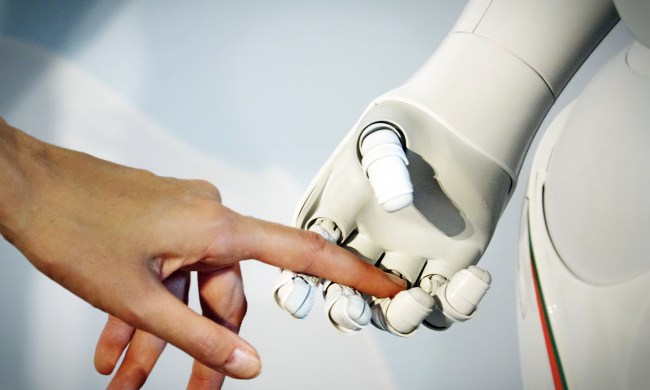When you consider the many varied tasks robots are suited to perform, one application no amount of Terminator viewings will prepare you for is the concept of brushing up on your prostate exam technique using a robotic anus.
But that’s exactly what Dr. Fernando Bello and Dr. Alejandro Granados have invented — courtesy of a new robotic rectal technology that’s designed to give medical students a realistic model to practice on, and to use in generating real-time data for trainers.
“What we’ve created is a simulator which combines robotics and haptics technology to create a physical model, alongside virtual reality where 3D rendering is used to replicate the internal anatomy,” Dr. Fernando Bello told Digital Trends. “It’s a way that both the trainee and trainer can see what their fingers are doing inside the subject at any particular moment, and get real-time feedback.”
The robot is able to measure the force that is being applied during an examination: revealing to the trainer if a junior doctor is pressing too hard, not hard enough, or failing to provide a full examination of the rectum.
Dr. Bello told Digital Trends that rectal exams are tough to teach because it is difficult to demonstrate the technique in a clear manner. “It’s something doctors around the world struggle with because there’s no way of assessing whether or not the examination is being carried out competently or not,” he says.
At present, most junior doctors train to perform rectal exams using either a basic plastic or silicone model, or by asking patients to give consent for a real-life examination. Neither of these solutions are perfect, however, since the former is not detailed enough, while the latter is not appropriate for repeated practice.
The Imperial College robot may therefore be the answer to would-be proctologists’ dreams. It replicates the feel of a rectum, using silicone and tiny robotic arms to simulate the shape, feel and pressure of the back passage. The shape and geometry of the robotic rectum was achieved by scanning volunteers using an MRI scanner. The robot can even recreate different types of anatomy — taking into account both normal and abnormal prostate conditions.
At present, Dr. Bello and Dr. Alejandro Granados have received funding to manufacture a market-ready prototype of their creation. Should all go to plan, we can expect similar robot rectums to start appearing in medical schools around the world in the not-too-distant future.
Now we just need to cross our fingers and hope Skynet doesn’t hold this against us when its army of killer robots eventually takes over!


